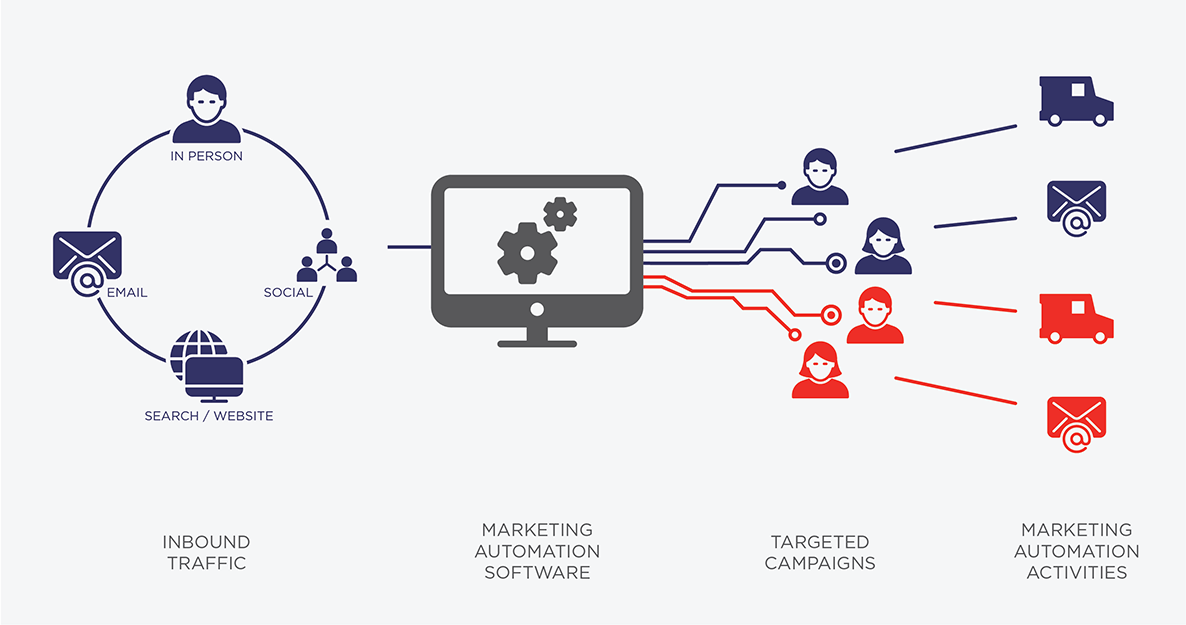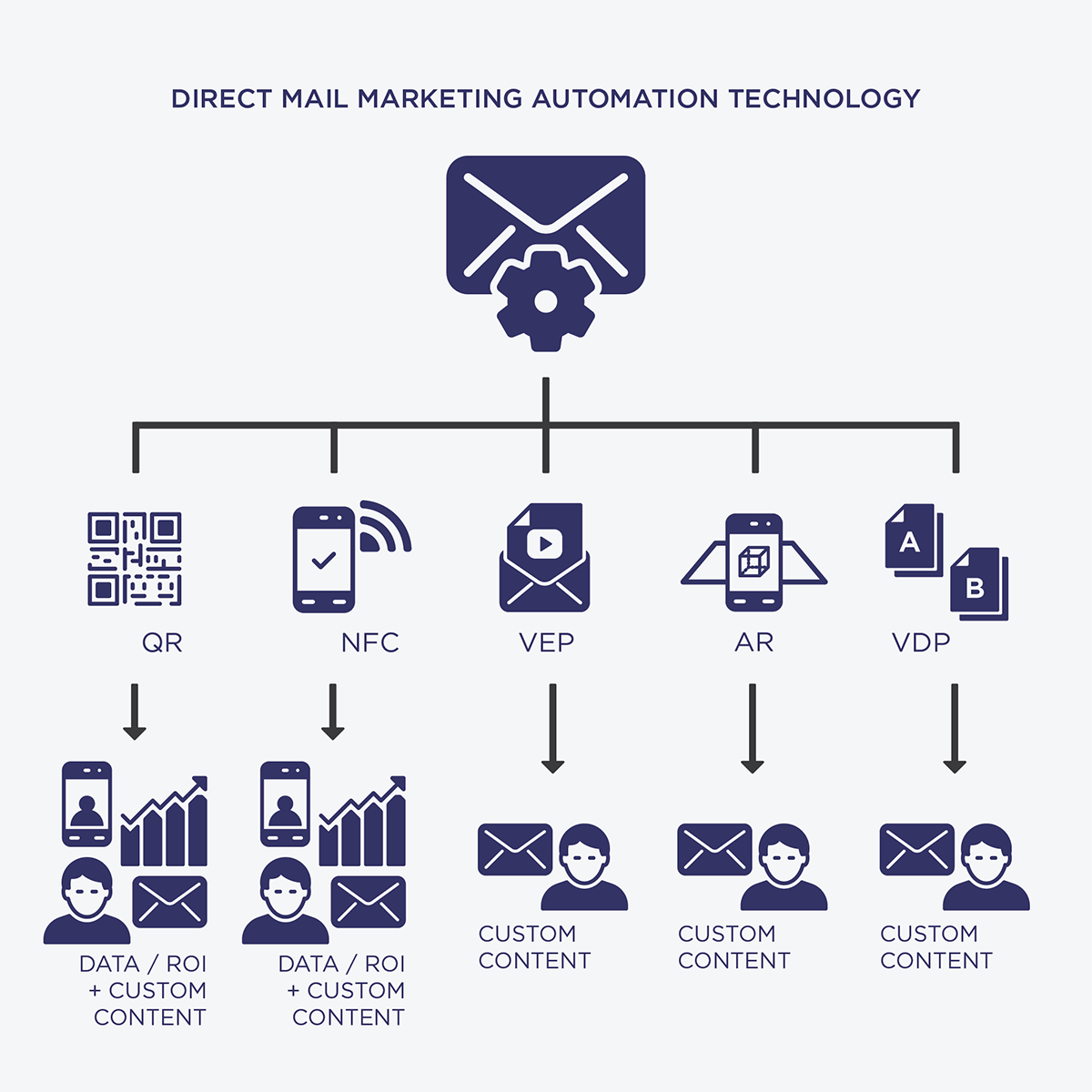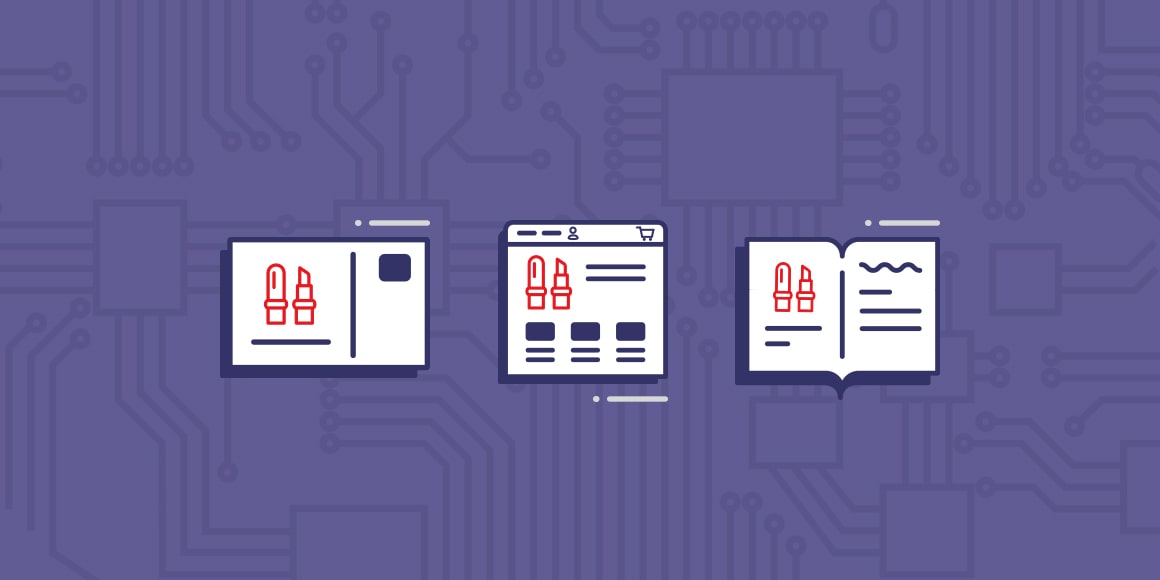
No matter how big or how small your business is, it can often seem like there aren’t enough hours in the day to get everything done. Inventory, sales, shipping, payroll, marketing, customer service… the wheel of time never stops turning. Time doesn’t have to be your enemy, however. It can be tamed and managed. You just have to be smart about it, and that starts with knowing what tasks should be delegated and how. In the old days – before computers, the internet and the cloud – the delegation of secondary tasks was mostly a human-to-human practice but nowadays, business-critical tasks can easily be delegated to specialized and easy-to-use software. Because the outcome of doing so can be faster and more efficient, businesses of all sizes may consider delegating marketing tasks to specialized software.
“…nowadays, business-critical tasks can easily be delegated to specialized and easy-to-use software.”
Enter marketing automation: software and technology platforms that allow businesses to effectively market to potential customers across a broad spectrum of channels (direct mail, email, the web, social media, mobile, etc.), while automating repetitive tasks that don’t require a human touch. Once the principality of the enterprise, marketing automation has, in recent years, become accessible to small businesses, both in terms of cost and ease of use. As intimidating as some of this may seem, the campaign management systems designed for small businesses to leverage these technologies are now built to be easy to use. Read on for a simple explanation of how marketing automation works.
Business functions that marketing automation systems can assist you with:
Targeting
By automating segmentation and targeting, small business owners can let software quickly connect the right audience with the right campaign. Less guesswork, and fewer endless hours agonizing over demographic charts.
Functionality and scale
With embedded marketing automation small business owners can now let software activate interconnected discovery, capture, engagement and conversion systems that work entirely on their own, leaving them free to concentrate on the day-to-day needs of their business.
Data, Insights, Reporting, and ROI
Marketing automation software can track the effectiveness of marketing campaigns in real time and can equip business owners with accurate and actionable marketing insights with real value. Depending on the marketing automation system being used, automated reports and/or performance dashboards might show business owners what aspects of a campaign performed well (or not so well), which in turn may allow them an opportunity to improve marketing decisions and the ROI of their next campaign.

Getting Started with Marketing Automation
How could a small business start using marketing automation? The best place to start may not be to dive into technology right away. First, it is important to understand the business objectives (or pain points) that marketing automation will be tasked with driving (or eradicating). In short, start by asking the right business questions:
- What am I trying to do?
- What do I wish my marketing could do better?
- What do I wish my marketing would do that it doesn’t do now?
- What do I wish my marketing would do if I had more time to devote to it?
The answer to the first question (what am I trying to do?) might be to acquire more customers. It might also be to let more current customers know about a new product or service, an upcoming special sale, or even a new grand opening. Once these business questions have been articulated, only then can one move to the next phase: How can marketing automation help improve these outcomes?
Segmentation and Targeting
One easy place to start marketing automation is segmentation and targeting. Marketing automation software can help organize your customers (potential or existing) based on key characteristics like age, gender, income, interests, and even purchasing history. Doing this helps identify those prospects in your market that are most susceptible to respond positively to a campaign – as opposed to marketing to tens of thousands of poorly targeted prospects that may have no interest in becoming your customers.
Note that by improving segmentation and targeting, the secondary questions listed above (what do I wish my marketing could do better; would do that it doesn’t now; and would do if I had more time to devote to it?) are also addressed. Improved segmentation and targeting also tend to increase campaign ROI in a variety of ways, from boosting discovery and response rates to driving visitors to a website or brick-and-mortar store (all precursors for net new sales).
Once the targeting and segmentation are complete, the data may be converted into a format that the right marketing automation software can then use to either help create a campaign from scratch or improve the effectiveness of a direct mail campaign. One way to maximize a direct mail campaign ROI is to directly connect a direct mail campaign to digital technologies and key digital marketing assets – like a website, video channel or social media account. How is this done? Below is a short list of some of the marketing automation technologies in use today that a small business can leverage to do just that.
Direct Mail Marketing Technologies
QR Codes
QR codes are high-tech boxy-looking bar codes that can be printed directly onto print ads and direct mail pieces. Via a scan by a customer’s phone, a direct mail campaign can connect potential customers to digital content or a digital platform – either of which can be designed to drive the next phase of their customer journey. Below are two of QR code’s most exciting direct mail uses:
- Brand discovery experiences: Not ready to push a sale right away? A QR code scan can allow potential customers to instantly access an array of digital experiences that may get them excited about your latest product, service or location. The code can take them to a video, for instance, or a specially-designed interactive web page designed to drive a first round of sales-free engagement. From there, you can engage them to sign up for news and special offers, or RSVP to your next event.
- Instant purchases: Ready to push a sale? No problem. You probably already know how important to business social media platforms can be. But did you know that social media platforms can also be shopping carts now? Why not help potential customers become followers and let them purchase products from your social media feed at the same time? The genius of adding QR codes to mailers is that they can help do just that: With just one scan, you can acquire thousands of new followers who can instantly purchase your products directly from your social media accounts.
NFC / Near Field Communication
A fancy term for what is basically a mailer-embedded wireless chip that interacts directly with a potential customer’s smartphone when gently tapped or hovered over, and can be used to connect them directly with customized digital content.
VEP / video-enhanced print
Yes, you guessed right, these are paper-thin video screens.
AR / Augmented Reality
Turn your mailers into mind-blowing virtual 3D pop-ups and animations on your potential customers’ phones and tablets.
Variable Data Printing (VDP)
Integrates customer databases with high-volume mass printing to customize text, images and promotions at specific times to provide recipients with personalized content.

The most difficult aspect of almost every small business’s journey of discovery into the world of marketing automation may be taking that very first step. To learn more about whether marketing automation is right for your business explore our white paper below.
 search
close
menu
search
close
menu



